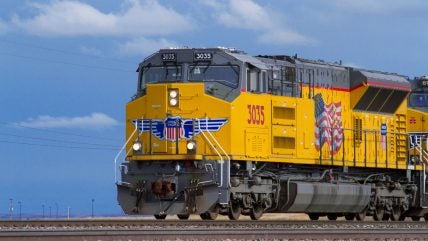
US railroad company Union Pacific will invest $3.4bn into its infrastructure, rolling stock and technology over the next year, the company revealed in the details of its 2024 capital plan.
More than half of the investment, $1.9bn, will go towards upgrading and replacing infrastructure, while $600m will be spent on both rolling stock and equipment, and capacity and commercial facilities, with the other $300m earmarked for technology investments.
CEO Jim Vena, who stepped into the role in the second half of 2023, said: “We invest to keep our railroad and employees safe, and we will never compromise on that. We also spend capital dollars to provide a quality service product, and strong service, creating a winning environment for our customers.”
Further details of the company’s capital investments for the year ahead come after the $3.4bn figure was revealed in its annual earnings report for 2023, when it also reported a 9% decrease in net income, citing volume declines and lower revenues from fuel surcharges.
The significant investment into rolling stock continues a major fleet modernisation push from the company that began in 2022 when it signed a $1bn contract with Wabtec for the modernisation of 600 locomotives.
How well do you really know your competitors?
Access the most comprehensive Company Profiles on the market, powered by GlobalData. Save hours of research. Gain competitive edge.

Thank you!
Your download email will arrive shortly
Not ready to buy yet? Download a free sample
We are confident about the unique quality of our Company Profiles. However, we want you to make the most beneficial decision for your business, so we offer a free sample that you can download by submitting the below form
By GlobalDataUnion Pacific said that in addition to the modernisations, its latest rolling stock investments will include freight car acquisitions to support “replacement and growth opportunities”.
Other investments will include siding extensions to increase capacity and improve efficiency, and expansion of the company’s intermodal footprint in high growth areas such as Southern California, Phoenix, Arizona and Kansas City, Missouri.


